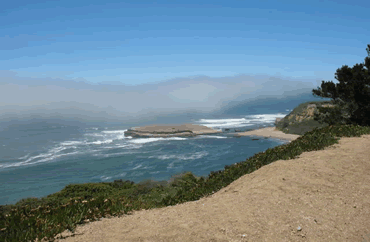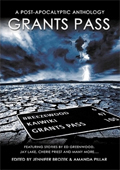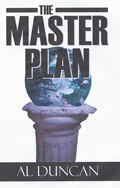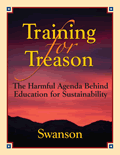BOYAN SLAT: CLEANING UP 300 MILLION TONS OF OCEAN PLASTIC
By Frosty
Wooldridge
November 21, 2014
NewsWithViews.com
“Once there was the Stone Age, then the Bronze Age, and now we are in the middle of the Plastic Age,” said teenager Boyan Slat. “Every year, we produce 300 million tons of plastic. Much of it reaches our oceans.”
(We
must clean plastic out of our oceans by utilizing 25 cent deposit-return
laws internationally if we hope to save all the creatures in the oceans
from  dying
horrible deaths by plastic ingestion, trapped in nets and killed by
poisons. We need more ideas like Boyan Slat’s to correct our
folly upon the planet.) Photography by Frosty Wooldridge
dying
horrible deaths by plastic ingestion, trapped in nets and killed by
poisons. We need more ideas like Boyan Slat’s to correct our
folly upon the planet.) Photography by Frosty Wooldridge
At 16 years of age, Boyan Slat scuba dived off Greece in the Mediterranean Sea to see more debris floating on and under the surface.
He said, “At first, I thought I was swimming through strange jellyfish. Instead, I swam through more plastic bags than fish.”
Seeing all the ocean trash, he asked himself, “Why not clean it up?”
Slat quit his Aerospace Engineering studies to create TheOceanCleanup.com in order to fund his research on how to pick up all the plastic trash floating on the oceans of the world. Researchers discovered that 46,000 pieces of plastic float on every square mile of Earth’s oceans. That plastic debris stems from billions of humans around the planet tossing their plastic into rivers, streams and directly into the oceans. Thousands of ships, boats and luxury cruisers toss millions of pieces of plastic day in and day out across the globe. Plastic does not break down. It oxidizes slowly into smaller pieces, but it never degrades.
Today, we find plastics in the tissue of birds, fish, whales, turtles, dolphins and just about every creature that feeds in the world’s oceans. Plastic debris constitutes a biological nightmare whose consequences reach decades into the future.
Additionally, with the five major gyres revolving in the oceans of the world, in excess of 100,000,000 (million) tons of plastic gather in giant ocean-going garbage patches. You may Google “The Great Pacific Garbage Patch” the size of Texas in the Pacific Ocean 1,000 miles off the coast of San Francisco. It grows from 60 to 90 feet deep in places. It kills millions of sea birds, turtles, sharks, dolphins and whales.
Slat said, “We stuff the oceans with enough plastic equal to the weight of 1,000 X’s the Eiffel Tower. It ranges from plastic nets to miniscule pieces. It’s doing tremendous damage to our marine life, reefs and all ocean creatures.”
Being a brilliant as well as naive teenager, Boyan Slat decided to construct designs of some contraptions that would scoop up millions of tons of plastic floating on our oceans. Because of his enormous ideas, TED TALKS invited him to bring his ideas to a wider audience. Enjoy the 11-minute speech. You will be shocked at what you see happening to our oceans.
Because of my worldwide scuba diving experiences, I saw the progression of plastics since 1965 when corporations first initiated plastics into the biosphere of this planet.
The plastic pollution problem
•
Millions of tons of plastic have entered the oceans.
• Plastic concentrates in five rotating currents,
called gyres.
• In these gyres there is on average 6 X’s
more plastic than zooplankton by dry weight.
• 1/3 of all oceanic plastic is within the
Great Pacific Garbage Patch.
Slat’s brilliant strategy combines his love of diving with his love of the biology of the oceans. He created a solar powered trawler in the shape of a manta ray that sweeps through the gyres 24/7 to pick up surface plastic, chew it up and store it in huge bins for collection. He also created floating booms that allow the oceans to sweep the plastics into their lairs for efficient pickup. When you see the designs, it will blow your mind.
“If we want to do something different to save our oceans,” he said. “We have to think differently. Ironically, those who throw their plastics face consequences. Ocean going ships spend $1 billion annually in repairs from plastic clogging their propellers and intakes.”
Ecological effects
•
At least one million seabirds, and one hundred thousand marine mammals
die each year due to plastic pollution. It’s probably much higher.
•
Lantern fish in
the North Pacific Gyre eat up to 24,000 tons plastics per year.
• The survival of many species, including the
Hawaiian Monk Seal and Loggerhead
Turtle, could be jeopardized by plastic debris.
• Plastic pollution is a carrier of invasive
species, threatening native ecosystems.
Boyan Slat, a teenager, stands at the head of his class in creating solutions for the folly of humanity. He needs your support. Join him.
Health effects
•
Toxic chemicals (including PCBs and DDTs) are adsorbed by the plastic,
increasing the concentration a million times.
• After entering the food chain, these persistent
organic pollutants bio-accumulate in the food chain.
• Health effects linked to these chemicals
are: cancer, malformation and impaired reproductive ability.
If ever humanity needs leaders to stand up and be counted, we need more Boyan Slat’s to lead us out of our ransacking our planet home toward a biologically healthy future.
|
|
Finally, with 300,000,000 tons of plastic being produced annually, year after year—and millions of tons reaching our oceans—it's way past time to create an international 25 cent deposit-return law to insure economic incentives that would return 90 percent of plastics to a responsible collection area. That would allow our oceans to recover. It would insure jobs for millions of kids. It's either that, or see a continuing degradation of our rivers, lakes, streams and ultimately, our oceans. The videos alone should make you sick to your stomach. Sick enough to speak up, take action and make change toward a more viable future for humans and animals that share this planet with us.
© 2014 Frosty Wooldridge - All Rights Reserved
Frosty Wooldridge possesses a unique view of the world, cultures and families in that he has bicycled around the globe 100,000 miles, on six continents and six times across the United States in the past 30 years. His published books include: "HANDBOOK FOR TOURING BICYCLISTS"; “STRIKE THREE! TAKE YOUR BASE”; “IMMIGRATION’S UNARMED INVASION: DEADLY CONSEQUENCES”; “MOTORCYCLE ADVENTURE TO ALASKA: INTO THE WIND—A TEEN NOVEL”; “BICYCLING AROUND THE WORLD: TIRE TRACKS FOR YOUR IMAGINATION”; “AN EXTREME ENCOUNTER: ANTARCTICA.” His next book: “TILTING THE STATUE OF LIBERTY INTO A SWAMP.” He lives in Denver, Colorado.
His latest book. ‘IMMIGRATION’S UNARMED INVASION—DEADLY CONSEQUENCES.’
Website: www.FrostyWooldridge.com
E:Mail: frostyw@juno.com














 Share This Article
Share This Article







